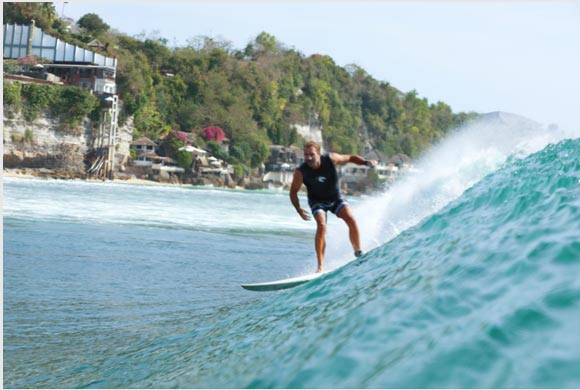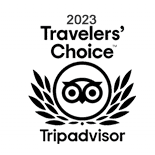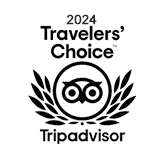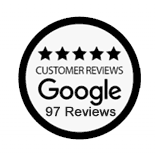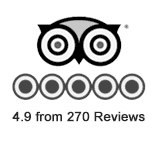WHAT LEVEL OF SURFER AM I

WHAT LEVEL OF SURFER AM I?
The question of ‘what level of surfer am I?’ inevitably crops up when you are selecting where to travel, and when to travel to a surf destination (tip; if it doesn’t occur to you, it should). After all, most surf destinations/countries have different surf seasons which may suit different surfing abilities.
If they don’t actually have different seasons, then at least there will be different surf breaks and or tides to consider and match up to your own surfing ability.

What Level Of Surfer Am I?
Surfing is an exciting sport that takes skill, practice, and a good understanding of your abilities. Knowing your “Level Of Surfer” is key to improving and staying safe in the water.
Surfing levels range from Beginner to Pro, each with its own set of skills and challenges. Swell Bali and Swell Surf Camp are great places for surfers of all levels to learn quickly and safely.
Elements like time spent surfing, the kind of board you use, and wave conditions affect how fast you progress. It’s important to know your real level so you don’t get hurt or stuck at the same skill level because you thought you were better than you are.
With seven different categories – Beginner, Novice, Progressive, Intermediate, Advanced, Expert, and Pro – there’s a lot to discover about where you fit in the surfing world. Finding out can help keep everyone safe on their journey to becoming a better surfer.
Ready to find out more? Keep reading!
Key Takeaways
- Knowing your surf level is crucial for safety and improvement. It helps you choose the right waves and equipment.
- Surfing myths, like thinking you’re better than you are, can be dangerous. Always accurately assess your skills to avoid risks.
- There are different surfing skill levels from beginner to pro. Each level has specific skills, goals, and suitable wave sizes.
- Continuous learning and setting realistic goals are key to progressing in surfing. Even pros work hard to polish their abilities.
- Interactive tools and expert coaching can help surfers identify their current level and plan how to improve their skills efficiently.
DON’T OVERESTIMATE YOUR SKILLSET
In our experience, most often a student will class themselves as an ‘intermediate’ surfer when they have had a few surf lessons before, but it’s actually not that straightforward. Overestimating your skillset as a surfer will almost inevitably lead to problems/frustration at the very least, and when the ocean is involved there’s an obvious element of danger too. We really want to avoid giving any student a frightening surf experience which could end up putting them off surfing for life.

So for us, there are many things which help define what level of surfing you are at. For example, you might have only been surfing a short time (perhaps a few months), but have been lucky enough to get loads of water time, plus the right surfboard and good surf conditions, in which case your progression could have been quite rapid.
But perhaps like many novice surfers we encounter, they’ve already been trying to surf for a while, but just haven’t managed to make any big ‘leaps’ forward.
This could be for any number of reasons. Some examples would be; regularly visiting a surf break which doesn’t enjoy good waves, and/or going out on a board which is too small, and/or choosing to surf in the wrong conditions (which don’t suit your ability), and/or not being very skilled at wave selection and/or (hopefully not) poor surf instruction initially which might have led to you developing some bad habits.
As a result of all these factors, it’s clearly not reliable to accurately define our level of surfing ability just by considering the length of time you’ve been surfing or the number of surf lessons you have taken.
Instead, we can gauge with far more accuracy what level of surfer you really are by actually assessing the skills you have managed to master so far in the water.
What do we mean by that?
In our many years of experience giving surf lessons at many different levels, we usually find surfers classing themselves in one of the 4 following categories; Beginner, Intermediate, Expert or Pro.
But we don’t agree with only using 4 categories as it takes an awful lot of water time and good conditions to progress from Beginner to Intermediate: It is widely accepted that an Intermediate surfer already possesses a lot of surfing skills.
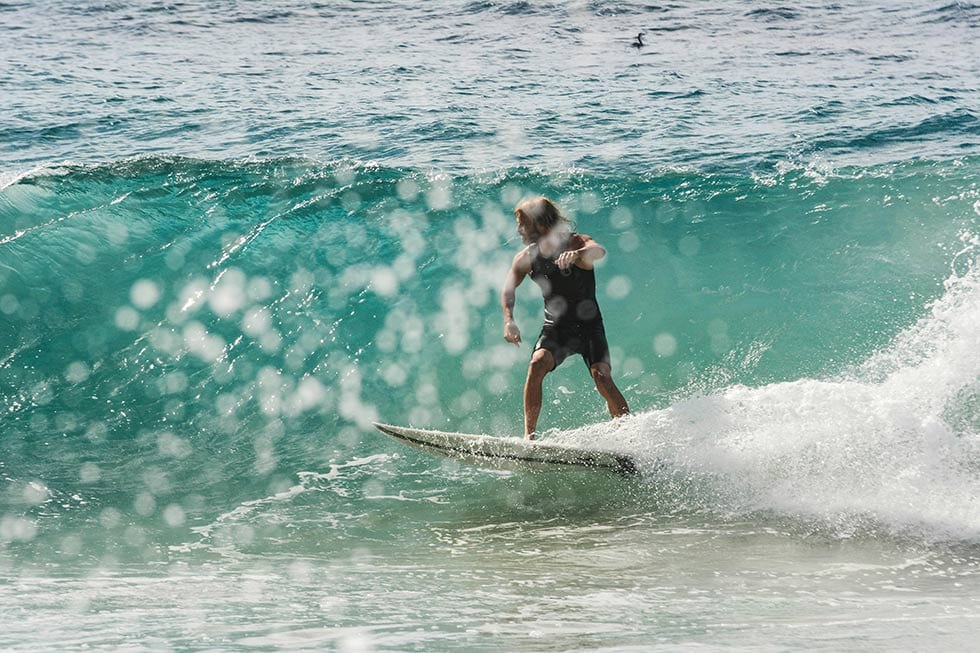
WHY KNOWING YOUR SURFING LEVEL MATTERS
Understanding your surfing proficiency is vital for your development and security on the waves. Overrating your skills may place you in perilous situations where dissatisfaction grows and risks escalate.
A transparent realization of your competency ensures you undertake tasks compatible with your skills, making surfing both secure and pleasurable.
ELEMENTS INFLUENCING SURF CONDITIONS
Local tides play a key role in shaping surf conditions. They affect how waves break at different beaches, making some spots ideal for surfing at high tide and others better at low tide.
Wave formations also greatly influence your surf experience. Whether the waves are tall and fast or small and slow can change not just day to day, but hour by hour.
Your time spent in the water is crucial for improving your level of surfing. The more you surf, the better you’ll understand these changing conditions. Equipment used is another important factor.
Using the right board for your skill level and the current conditions can make a big difference in catching waves successfully.
COMMON SURFING MYTHS
Many surfers think they’re better than they are, which can be dangerous. It’s easy to overjudge your skills and face risks on the water.
THE RISK OF OVERESTIMATING SKILLS
Overestimating skills in surfing can lead to injuries or scary experiences. It’s crucial to assess your abilities accurately for safety and improvement on the water. Surfing above your skill level without proper judgment can result in facing waves you’re not ready for, risking harm both to yourself and others around you.
Knowing where you stand helps keep everyone safe in the surf zone. Surfers who overestimate their prowess might ignore warning signs of dangerous conditions, pushing beyond limits safely managed by their real capabilities.
This mistake emphasizes why an honest evaluation of one’s surfing level is key before paddling out.
HAZARDS LINKED TO MISJUDGING YOUR ABILITIES
Misjudging your surfing capabilities can lead to serious problems in the water. You might confront waves that are excessively large or intense for your current skill level. This risk doesn’t only place you in danger of getting hurt, but it can also put other surfers nearby in harm’s way.
Surf instructors commonly encourage learners to extend slightly beyond their comfort areas. This strategy aids in advancement, but going far past this limit significantly raises the possibility of mishaps.
Opting incorrect wave sizes and styles for your abilities hampers progression. Visualize you feel set for advanced barrel waves when elementary maneuvers still present complications; it’s akin to bypassing rungs on a staircase.
Each mistaken step could imply missing necessary proficiency required to manage demanding conditions securely and methodically.
7 CATEGORIES
For us at Swell, we feel there should actually be 7 stages of surfing. We find it really useful with our surf lessons or surf guiding to very accurately assess someone’s surf skills by using these 7 categories, clearly stating the skills mastered within each stage.
OUR 7 LEVEL OF SURFER LEVELS ARE:
-
- BEGINNER
- NOVICE
- PROGRESSIVE
- INTERMEDIATE
- ADVANCED
- EXPERT
- PRO.
Experts and Pros don’t need our help of course, but we do find the subtle changes and skill sets required, especially to get from the Beginner to the Intermediate stage, are worthy of being defined and given their own name as there are so many nuances to take into account with a surfer’s development, especially in the early stages. Let’s talk about those stages and what they mean to us.
SURFER LEVEL COMPARION TABLE
| Skill Level | Paddling Skills | Wave Size Comfort | Takeoff Skills | Turns & Maneuvers | Typical Mistakes |
|---|---|---|---|---|---|
| Beginner | Struggles with balance and board control | Whitewater <1ft
|
Mostly foam-board practice, knees first | None | Looking down, poor pop-up, bad stance |
| Novice | Can paddle short distances, low efficiency | Small green waves (1ft)
|
Inconsistent pop-ups, late takeoffs | Occasional trimming | Wrong wave angle, hesitant commitment |
| Progressive | Improving paddling strength & positioning | 1–2ft green waves
|
More reliable pop-ups, starting to angle | Trimming, beginning turns | Shoulder chasing, lack of compression |
| Intermediate | Strong paddle control, better positioning | 2–3ft waves
|
Confident angled takeoffs | Bottom turns, soft cutbacks | Stiff style, poor timing |
| Advanced | Efficient, anticipates sets, great duck diving | 3–5ft waves
|
Explosive takeoffs, steep drops | Top turns, floaters, cutbacks | Over-surfing, poor priority awareness |
| Expert | Reads ocean easily, highly efficient paddler | 5–8ft waves
|
Late drops, deep positioning | Vertical re-entries, combos | Pushing limits too far, inconsistent landings |
| Pro | Elite conditioning, unmatched positioning | 8ft+ heavy surf
|
Any takeoff, any conditions | Aerials, barrels, full repertoire | Risk-taking, equipment limitations |
SO….WHAT LEVEL OF SURFER ARE YOU?
BEGINNER SURFER
A beginner is exactly that, someone who is just beginning surfing, new to the sport, with no previous surf lessons or surf experience. You will have no idea at all about any aspect of surfing and need complete surf instruction right from the very basics (no shame in that by the way). We love complete beginners at Swell and always give our beginners some exercises they can begin at home to prepare for the rigours of paddling especially, plus tips on how to pop up so that by the time they arrive for their surf holiday/vacation they have a bit of a head start.

You will be needing to learn:
- The names of the various parts of the surfboard
- Aspects of water safety
- Whether you have a ‘goofy’ stance or a ‘regular’ stance
- How to lie on the board
- How to sit on the surfboard in the water
- How to paddle
- How to pop-up
- How it feels to catch a wave and be ‘propelled’
- How to stand up once you have caught a wave
- How to improve your stance for balance as the wave carries you
- Basic theory about how waves are formed
- How to identify a good wave to catch
- When to start paddling for the wave
Recommended board for a beginner, adult, average weight :
9’0” long Soft top surfboard with lots of volume
Ideal wave height:
1′ to 3′ (half a meter to 1 meter) white water / broken waves.
NOVICE
The NOVICE stage applies to you if you have taken some surf lessons before or even visited one or two surf camps in the past and have already mastered the skills listed above. You should also be able to;
Paddle into white water waves or even small green waves unaided (i.e. not being pushed into the wave by someone else)
Able to pop-up on the surfboard and ride for a few meters without falling
Paddle yourself back into position ready for the next wave

You will be aiming to do the following:
- Start to read and select waves (learning which ones to leave and which to paddle for)
- Improve your stance on the surfboard to get ready for;
trimming (turning slightly) the surfboard to start to ride ‘down the line’ instead of only going in a straight line - Learn about surf etiquette
Recommended board for a novice surfer, adult, average weight :
8’0 to 9’0” Soft or hard top top surfboard
Ideal wave height:
2′ to 4′ (half a meter to 1.2meters) white water / broken waves.
PROGRESSIVE
The progressive stage applies to you if you have already mastered the skills of the BEGINNER AND NOVICE surfer levels above and are now out of the whitewater (i.e. you are now able to ride shoulder/head-high green, unbroken waves). To recap, we would refer to you as a progressive surfer if you can already do the following:
- Paddle easily out to a break
- Understand and able to follow priority/surf etiquette in the line-up
- Read waves and make correct decisions whether or not to take one or not
- Paddle unaided into chest/head-high waves
- Pop up quickly with ease
- Have a good stance on the surfboard
- Speed up the surfboard on the wave to enable gentle turning:
- Able to surf a ‘wavy-line’ along the face of a wave, keeping ahead of the whitewater when a wave is not closing out
- Paddle back out to the line up unaided after taking your wave

As a progressive surfer, you will be aiming to achieve the following:
- Learn how to make a more drastic top turn and bottom turns
- Taking steeper drops (paddling into larger waves)
Recommended board for a progressive surfer, adult, average weight :
7’0 to 8’0” Hard top surfboard
Ideal wave height:
2′ to 4′ (half a meter to 1.2meters) unbroken waves.
INTERMEDIATE
An intermediate surfer will have mastered all the skills above; to briefly recap you are an INTERMEDIATE surfer if you can already do the following:
- Paddle into overhead or larger waves
- Keep your speed up on a wave to stay ahead of the white water
- Make more drastic top turns and a bottom turns
As an intermediate surfer, you will probably be aiming to achieve the following:

- Learn how to do ‘cutbacks’ (a sharp turn back into the steep part of the wave to make more of a wave’s face)
- Begin to ‘stall’ yourself on the wave to try to get ‘barrelled’
- Start learning how to climb on top of the wave’s lip, referred to as a ‘floater’
- Learn how to come ‘off the lip’ sharply and back into the wave
Recommended board for a progressive surfer, adult, average weight :
6’8″ to 7’8” Hard top surfboard
Ideal wave height:
3′ to 5′ (1 meter to 1.6meters) unbroken waves.
ADVANCED SURFER LEVEL
A surfer who is at an advanced stage is already able to do the following:
- Has an excellent wave selection
- Can make controlled high-speed bottom and top turns
- Can round-house cutback into the steep part of the wave
- Can get barrelled in medium-height waves
- Can easily manage a larger, wider bottom turn to rush ahead of a close-out section and re-enter an unbroken part of the wave
- Can make off-the-lip manoeuvres
- Floaters

Recommended board for an advanced surfer, adult, average weight :
6’0″ to 6’8” Hard top surfboard
Ideal wave height:
4′ to 7′ (1.2 meters to 2 meters) unbroken waves.
EXPERT and PRO LEVELS
Expert surfers, and of course Pro surfers, don’t need to have an explanation of what they can achieve on a wave as they have inevitably mastered all the techniques described above + a lot more. 360’s, aerials and being barrelled in huge waves are usually all in their repertoire.

This article is aimed more at explaining the difference between the first 5 stages of surfing so that as a surfer with less experience, you can let surf camps or surf hotels like us correctly judge where we should be advising you to surf, what type of surf lesson you might need, or whether you are better off just going out with a surf guide.
Recommended board for an advanced surfer, adult, average weight :
5’5″ to 6’5” Hard top surfboard
Ideal wave height:
5′ and up
DON’T RUSH, SURFING TAKES TIME
It’s a really terrible idea to overstate your surf experience; not least because you will very likely end up in the wrong surf spot for your ability which can inevitably lead to serious injury, or worse.
Having a frightening experience in waves too large for your skillset can set you back for months if not years. Any good surf coach or guide will quickly progress you through stages if they can see you are able: Noone is going to deliberately hold you back and many surf coaches will naturally push you a little out of your comfort zone as that is generally how we all progress. Surfing is a life-long commitment of learning: Even Pro’s will tell you they are still honing/improving skills on every single wave they take.
We are in the process of making an interactive level guide to help you identify your current surfing-skill set.
Once you have correctly established where you are in your stages of learning, come and see us at Swell Surf Camp in the Dominican Republic. The North coast of the Dominican republic is one of the world’s best destinations for beginner surfers. We’d love to help you keep getting better! Our luxury surf coaching holidays have taught 1000’s of people the sport of surfing in a safe, fun and quick way. If you need any more assistance in ‘diagnosing’ your surf level, just drop us a line and we will try to help out.
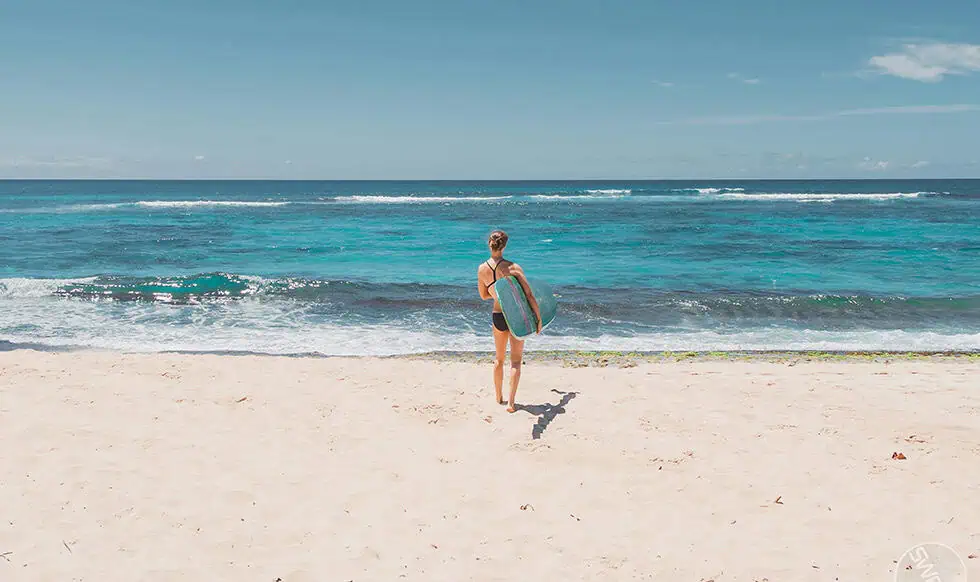
We hope you like this article of “what level of surfer am I?” if you do, you might also like the following article: different surfboard and which boards are best suited at which stage of your surfing level, have a look at this page: Different surfboards
Our luxury surf coaching holidays have taught 1000’s of people the sport of surfing in a safe, fun and quick way.
QUESTIONS
-
WHAT ARE THE 7 DIFFERENT SURFING LEVELS AND HOW DO THEY DIFFER?
Swell Surf Camp categorizes surfers into 7 distinct levels: Beginner, Novice, Progressive, Intermediate, Advanced, Expert, and Pro. Unlike traditional 4-level systems, this detailed classification helps accurately assess your surfing abilities. Beginners start in whitewater waves under 1ft, learning basic pop-ups and balance. Novices progress to small green waves (1ft) with inconsistent takeoffs. Progressive surfers handle 1-2ft green waves and begin angling. Intermediate surfers confidently surf 2-3ft waves with bottom turns and cutbacks. Advanced surfers tackle 3-5ft waves with vertical re-entries and floaters. Expert and Pro levels handle 5ft+ waves with aerial maneuvers and barrel riding. This comprehensive system ensures safer progression and appropriate wave selection for your skill level.
-
HOW LONG DOES IT TAKE TO PROGRESS FROM BEGINNER TO INTERMEDIATE SURFER?
Progression from beginner to intermediate typically requires 20-50 hours of quality water time, depending on several factors. Consistent practice, proper instruction, appropriate wave conditions, and correct equipment significantly accelerate learning. Many surfers plateau because they surf poor waves, use inappropriate boards, or lack proper coaching. At Swell Surf Camp, structured lessons in ideal Dominican Republic conditions often achieve faster progression than months of unsupervised practice. Key factors affecting timeline include: frequency of surf sessions, wave quality, board selection, physical fitness, and instruction quality. Some students progress rapidly with intensive coaching, while others need patient, methodical skill building. The journey from catching whitewater to performing cutbacks on green waves involves mastering numerous technical and ocean awareness skills. Quality instruction and honest self-assessment ensure steady, safe progression through each level.
-
WHAT ARE THE MOST COMMON MISTAKES SURFERS MAKE WHEN SELF-ASSESSING THEIR LEVEL?
The most frequent mistake is classifying yourself as "intermediate" after only a few surf lessons or vacation sessions.
Many surfers focus solely on time spent surfing rather than actual skills mastered, leading to dangerous overestimation.
Common errors include: confusing standing up in whitewater with true wave riding, believing board size doesn't matter for progression, and ignoring surf etiquette and safety knowledge. At Swell Surf Camp, we see students who think they're intermediate but struggle with consistent pop-ups, proper stance, or catching unbroken waves. Other mistakes include judging ability based on one good session rather than consistent performance, and overlooking crucial skills like wave selection and lineup positioning.
Physical factors also mislead - being a strong swimmer doesn't automatically make you an advanced surfer. Our detailed skill benchmarks prevent these assessment errors by evaluating actual surfing competencies rather than assumptions or isolated experiences.
-
WHAT WAVE SIZE SHOULD I SURF BASED ON MY SURFING LEVEL?
Wave size recommendations vary significantly by skill level for safety and progression. Beginners should stick to 1-3ft whitewater/broken waves to master basic pop-ups and balance. Novice surfers can handle 2-4ft whitewater while learning wave selection. Progressive surfers graduate to 2-4ft unbroken green waves for angling and trimming practice. Intermediate surfers confidently surf 3-5ft unbroken waves, performing turns and cutbacks. Advanced surfers tackle 4-7ft waves with complex maneuvers like floaters and barrel riding. Expert surfers handle 5-8ft powerful surf with vertical re-entries. Pro surfers surf 8ft+ heavy conditions with aerial maneuvers. Surfing waves too large for your level leads to injuries and setbacks. At Swell Surf Camp, our instructors carefully match students with appropriate wave conditions for safe, accelerated learning.
-
HOW DO I KNOW IF I'M OVERESTIMATING MY SURFING ABILITY?
Overestimating your surf level is dangerous and common - many surfers classify themselves as "intermediate" after just a few lessons. Warning signs include: struggling with consistent pop-ups, inability to catch unbroken green waves, poor wave selection, or feeling overwhelmed in shoulder-high surf. At Swell Surf Camp, we assess actual skills rather than time surfing or lesson count. Key indicators of overestimation include paddling struggles, late takeoffs, looking down while surfing, and poor stance. Honest self-assessment prevents dangerous situations, injuries, and frustrating surf experiences. Use our detailed skill benchmarks - if you can't consistently perform all skills in a level, you're not ready for the next one. Professional surf instruction helps identify your true level safely.
-
WHAT SURFBOARD SHOULD I USE FOR MY SURFING LEVEL?
Surfboard selection directly impacts your progression and safety in the water. Beginners need 9'0" soft-top surfboards with maximum volume for stability and safety. Novice surfers use 8'0"-9'0" soft or hard-top boards as they transition to green waves. Progressive surfers benefit from 7'0"-8'0" hard-top surfboards for better maneuverability. Intermediate surfers ride 6'8"-7'8" boards to practice advanced turns. Advanced surfers use 6'0"-6'8" performance boards for critical maneuvers. Expert and Pro levels ride 5'5"-6'5" high-performance shortboards. Using boards too small for your level severely hampers progression - volume and length provide crucial stability for skill development. At Swell Surf Camp, we provide appropriate boards for each level and teach you how equipment affects your surfing performance and safety.
-
WHAT MAKES SWELL SURF CAMP DIFFERENT FOR LEARNING TO ASSESS AND IMPROVE SURFING LEVELS?
Swell Surf Camp pioneered the luxury surf instruction model specifically for beginners and intermediate surfers.
Our detailed 7-level assessment system provides more accurate skill evaluation than traditional 4-level classifications. Located in Cabarete, Dominican Republic, we offer consistent, beginner-friendly waves year-round with professional instruction from passionate coaches. Our systematic approach combines detailed skill benchmarks, appropriate equipment for each level, and structured progression pathways.
Since 2009, we've taught over 9,000 people using our proven methodology emphasizing safety, fun, and accelerated learning.
Our instructors expertly match students with suitable wave conditions and provide real-time feedback for rapid improvement. The luxury accommodations, gourmet meals, and social atmosphere create an ideal learning environment. We offer interactive assessment tools and personalized coaching to accurately identify your current level and plan your progression path efficiently.
-
WHY IS ACCURATE SURF LEVEL ASSESSMENT CRUCIAL FOR SAFETY?
Accurate surf level assessment prevents injuries, drowning risks, and traumatic experiences that can end surfing careers. Overestimating abilities leads to dangerous wave selection - beginners attempting overhead surf face serious consequences. Misjudging your level also endangers other surfers through poor lineup positioning and wave priority violations. At Swell Surf Camp, we've seen students set back months or years by frightening experiences in waves beyond their abilities. Proper assessment ensures appropriate surf spots, correct equipment selection, and suitable instruction levels. It also prevents the frustration of plateauing due to unrealistic expectations. Our 7-level system provides precise skill benchmarks, allowing safe progression while building confidence. Professional assessment by experienced instructors identifies your true abilities and creates appropriate learning pathways for continuous improvement.
-
WHAT SKILLS MUST I MASTER TO BECOME AN INTERMEDIATE SURFER?
Becoming an intermediate surfer requires mastering specific technical and ocean skills beyond basic wave catching. You must paddle confidently into chest/head-high waves, execute quick pop-ups, and maintain proper stance. Wave reading becomes crucial - you need excellent wave selection and priority understanding in lineups. Intermediate surfers consistently catch unbroken green waves, angle their takeoffs, and trim down wave faces ahead of whitewater. Essential maneuvers include bottom turns, top turns, and cutbacks.
You should paddle efficiently to lineups, demonstrate proper surf etiquette, and handle various wave conditions.
At Swell Surf Camp, intermediate students work on speed control, stalling techniques for barrel sections, and floater maneuvers. This level demands ocean confidence, equipment knowledge, and refined technique - not just time in water. Professional assessment ensures you've truly mastered each prerequisite skill before progression.
-
WHERE IS SWELL LOCATED?
Swell Surf camp is located on the North coast of the Dominican Republic, right in the center of the cool surfer town of Cabarete. With 3 international airports to choose from it's also one of the easiest places to get to for a quick surf getaway. Puerto Plata Airport is only 25 minutes away from Swell. On the' getting here' page you'll find the different options of getting to us.
-
ABOUT SWELL SURF CAMP
Founded in the winter of 2009, Swell Surf Camp emerged from Jeroen and Clare Mutsaars vision. They lived in the Dominican Republic for eight years and spotted a gap in the surf camp market for higher quality accommodations combined with an engaging social atmosphere. Their extensive travel and stay experiences across different countries like Costa Rica, Nicaragua, Peru, Hawaii, Indonesia and various European nations fueled their passion to elevate the surfing retreat experience.
Swell Surf Camp is renowned as the world’s first luxury surf camp tailored specifically for beginners. The founders collaborated with a notable Swiss architect to design facilities that blend comfort with style. This innovative approach ensures every guest enjoys superior lodging and amenities. Since its inception, Swell has taught over 9,000 people how to surf with an emphasis on safety, fun, and structure.
Our achievements speak volumes. Swell has collected numerous accolades and maintains hundreds of stellar reviews from guests globally. Recognized repeatedly as the leading destination for luxury surf vacations, our commitment to excellence keeps us at the forefront of the industry.
Beyond surfing, Swell offers a diverse range of activities including kitesurfing, wingfoiling, and yoga classes. Guests can also enjoy horse riding both on scenic beaches and mountain trails—plus exciting adventure-filled excursions like canyoning.
A crucial element of any vacation is food, and here at Swell we excel. We provide delicious home-cooked meals daily. For evenings out, guests find themselves just minutes away from an array of dining options that promise satisfying culinary adventures.
For those who prioritize upscale amenities and wellness in a unique setting built around learning surf skills amid profound natural beauty, Swell should be on the top of your surf destination list
-
WHAT TO EXPECT FROM A 1 WEEK LEARN TO SURF HOLIDAY
Dreaming of catching your first wave but wondering if surf lessons are really for you? At Swell Surf Camp, our lessons are designed specifically for beginners, and we mean absolute beginners, particularly those between 40 and 55 from cities like New York, Boston, or Toronto. You’ll never feel rushed, lost, or out of place. Our expert instructors genuinely love teaching, and their approach is as much about encouragement as it is about skill-building. Every instructor carefully tunes each lesson to fit one person, you, so you always get personalized support, whether you’re working on basic paddling, learning to pop up, or building confidence in the water.
The journey at Swell Surf Camp is about progression, not perfection. You’ll start with the very basics, practicing on the sand before moving into gentle ocean waves with your instructor right beside you. Throughout every lesson, our focus is on clear communication, safety, and keeping things fun. As you progress, our instructors give you feedback in real-time, helping you celebrate small wins and guiding your next steps. You’ll learn solid surfing foundations, water safety, and even the unwritten rules of surf culture. By the end of your stay, you’ll be amazed at your own growth and how natural surfing feels. Don’t wait to discover how transformative a single lesson can be, book your surf adventure at Swell Surf Camp and let your surfing journey begin!
-
WHAT SPORTS DOES SWELL OFFER?
It's not only surfing that's on offer at Swell, we also offer learn to wingfoil and learn to kitesurf packages.
